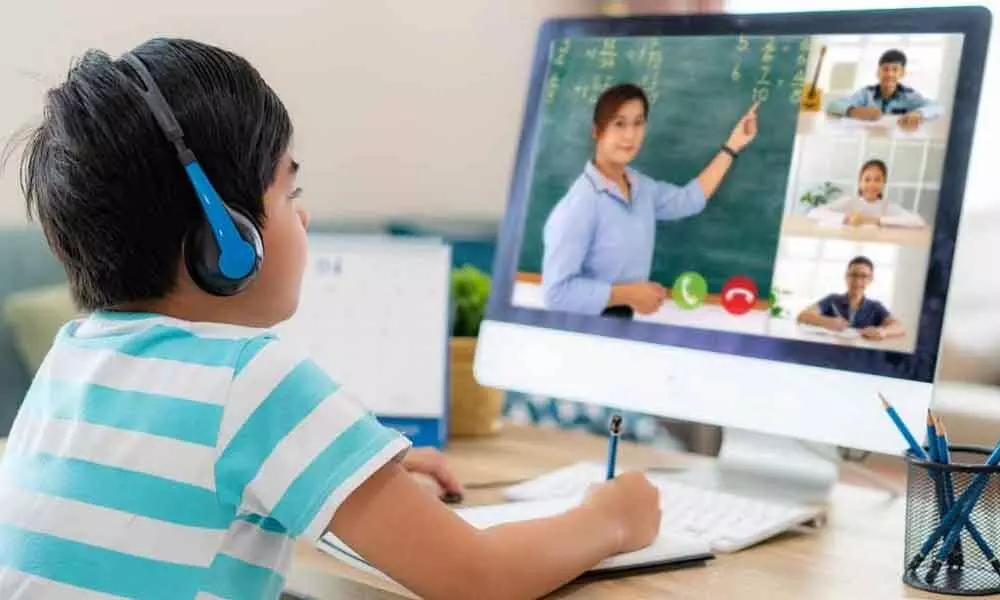Making online classes fun!

Representational Image
Who was your favorite teacher? How did they engage, inspire, and enable you? Why did you love them?
One of my favorite teachers was my mother. She taught drama and English, and I don't think she saw a great distinction between the two. She was a tiny woman, bigger on the inside than the out, and she'd flub up something every now and then, saying something she didn't mean, which turned out to be hilarious.
The principal would walk by the room - poke his head in - listen to uproarious laughter - shake his head - walkout.
Somehow, her students performed better than anyone else's.
Make 'em laugh – and check their MRI
Magnetic-resonance-imaging studies of the human brain show that humor lights up your brain. Different parts activate during setup, storytelling, and anticipation. The punch line lights up a new area and all that have engaged before.
'Want to engage people for learning, innovation, and more? 'Just make them laugh.
Laugh, yourself and put on a neuro-headset - or a pair of shoes
What's the most-watched TED talk of all time? Sir Ken Robinson, "Do Schools Kill Creativity?" Once you've watched it, you'll realize that not only is he talking about creativity, but he's super-creative, too. The talk could have been a recitation of educational statistics, but it was delivered as a semi-comedy routine. He's funny, as well as insightful, and that's what an audience (including students!) is looking for.
Just telling jokes isn't the answer, though. Research also shows you need to be in synchrony with your audience to be effective, and coherence (using your whole brain) leads to better decisions. Basically, if you're having fun, they're probably having fun, too. You may want to check yourself into an executive neuro-lab or a learning center equipped with an MRI. It's the same, online and offline.
Here's a feedback technique that may help you as much as a multi-million-dollar machine: Join a group of people wanting to become more effective teachers/speakers. Instead of taking scientific readings of yourself and your audience, have everyone stand. As you speak, step towards the audience when you're more engaged – backward when less. Each audience member should do the same. You'll be physically together when things are working well and physically apart when they're not. 'Easy, quick feedback is the best way to learn, and you can experiment at the moment.
Open up, like monty python
Whole-brained thinking and synchrony happen in a state we call "openness." John Cleese (of Monty Python fame) gave an insightful speech on creativity in management and open vs. closed mode (check it out on YouTube). Psychologists have known this for years: home-like, open, playful environments invite exploration and effective learning. Stressful, competitive environments may spur performance and focus us on the crisis to manage at this moment, but they're ineffective for exploratory learning and generating options (dreams, if you will) to build the future. Do you use competition as encouragement for learning? It's counter-productive until we get to the performance.
Is your online class- or meeting-room a place to perform or learn? Your answer will decide the environment you'll need to create – open-mode or closed-mode.
Think with your body
In her Harvard research on burnout, Dr. Edy Greenblatt found the psycho-chemical basis (among other findings) of sleepy, unproductive work. Office workers (and I dare say many online learners) are not using their bodies all day long, producing endorphins, dopamine, and other brain chemicals associated with physical exercise.
Just get up and stretch and do something physical as a class (or meeting) when online. Yes, we're virtual, but we're physical beings, too.
Take a sunshine break
No one needs to walk (or drive) from one building to the next, now, but we still need sunshine. Part of Dr Greenblatt's research drew on the science of Seasonal Affective Disorder (SAD). Some people are especially sensitive to lack of light, and when sunny Singapore experiences international-fire-induced haze, Shanghai and Los Angeles struggle under smog, and people work inside on laptops during Covid, everyone forgets about sunshine.
Stepping into the sunshine changes your serotonin levels (brain hormones) and lifts your mood, energy, and immune system. Sunshine wakes us up – and wakes our brains for learning. What if you mandate a sunshine break right before your class or meeting?
Remix it, don't be the star, and work on something real
We're accustomed to 2–3-minute videos (max 5) – 15 if it's a super-well-delivered TED talk. Microlearning programs are gaining traction. Do we really have to take a break every 3 minutes and turn every learning journey into an ADHD experience?
No. However, I do find it effective to plan into my online sessions a mixture of media and activities – video, polls, exercises, etc. I often start with an inspiring video, and sessions work better when we have lively debate and treat it like a workshop. Participants can read, watch videos, etc. beforehand or afterward. If I start repeating myself, I make a video and post it online.
The most effective thing we can do together is work together. So, we do a project, we make decisions on a case – we get specific and active.
What happens when I'm no longer the sage on the stage – the star in the constellation – and they debate directly with each other?
That's when it's really working. That's when we all win, online and offline.
(The author is the Director of i2e – The Innovation & Entrepreneurship Center at S P Jain School of Global Management)

















